Courtroom animation utilising computer and VR softwares
2025
Project
No Objections
About the project
This group project in an animation created for VR, utilising the VR software Quill to create a unique style based on courtroom sketches. The animation captures a rigged trial, showcasing the first person perspective of the accused party, the judge of the trial and a jury member who accepts a bribe from another juror. For this project, I created the environmental assets, designed the layout for the courtroom and created rigs for the judge and background jury members, as well as idle animations for the main and background jury members.
Environment assets
The environmental assets were modelled in Blender, with the idea of being asymmetrical and skewed, in order to tie in to the courtroom sketch style.
The models were then used as a reference in Quill to hand draw their outlines in VR. As well as creating outlines for the 3D models, I also created some additional furnishings, such as a chandelier and fencing, as outlines in Quill, inspired by the idea that courtroom sketches do not always colour and give form to every detail, meaning it would fit in with our visual style to leave some furnishings as outlines.
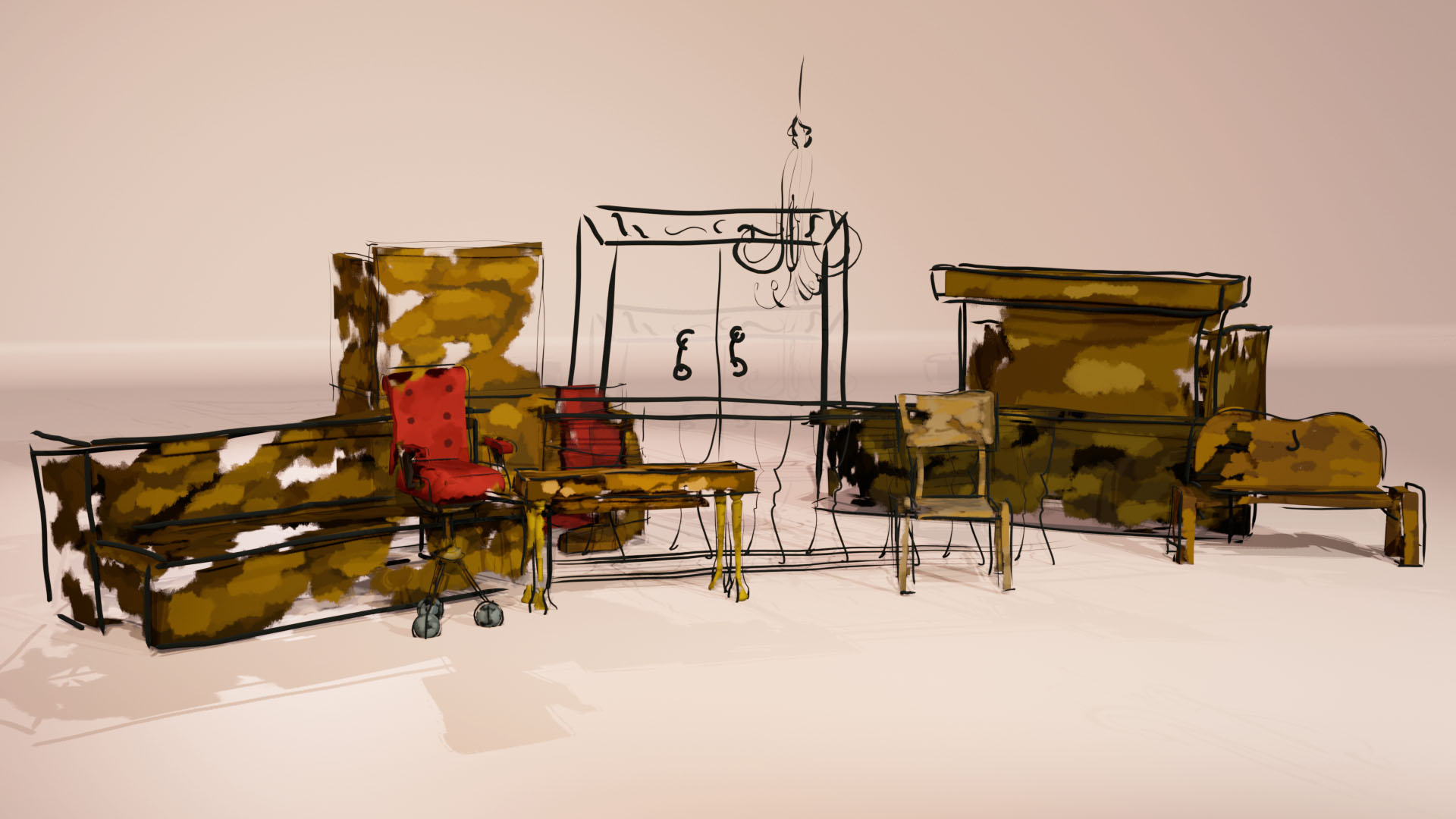
The models were textured using colours painted on to the surface of the models using a pastel brush, rather than adding realistic textures. I created depth by layering different tones to give the illusion of the variation of colour caused by grain in wooden furniture. I also painted transparency on to the models in the same way to make the models look as though they had been quickly sketched.
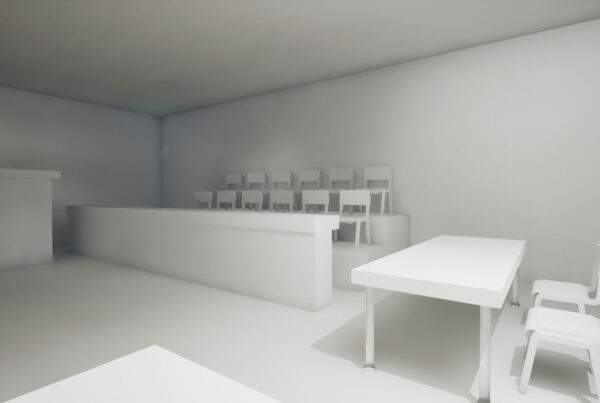
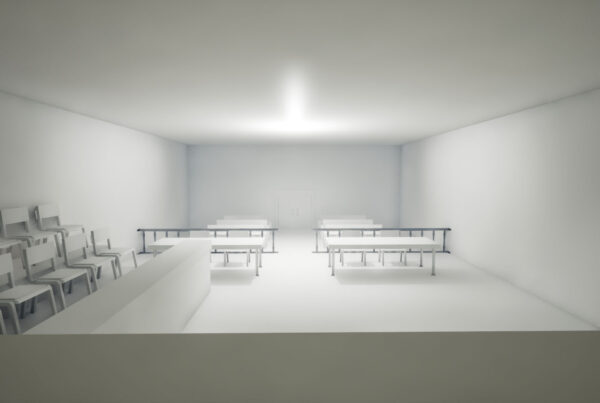
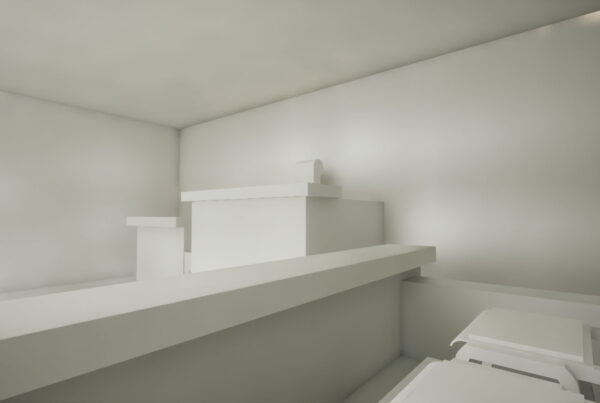
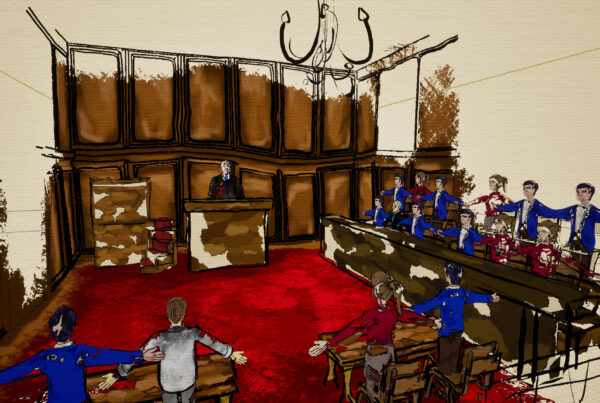
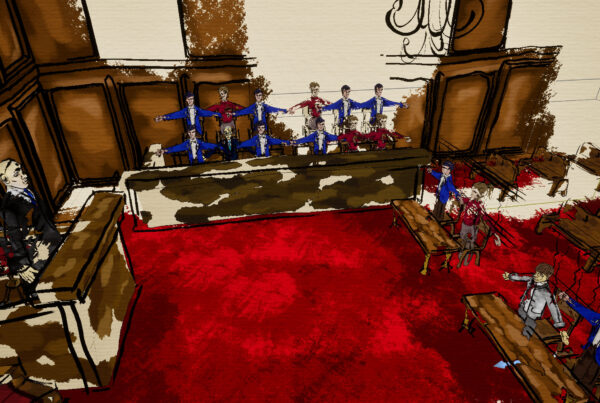
Courtroom Layout
As well as creating the assets themselves, I also designed the layout of the courtroom, using real courtroom layouts as a reference, while also using exaggeration in the distance between the judge and accused party to create a sense of powerlessness and disconnection for the defendant. I created a greybox in Unreal Engine before adding in my own assets when the layout had been finalised.
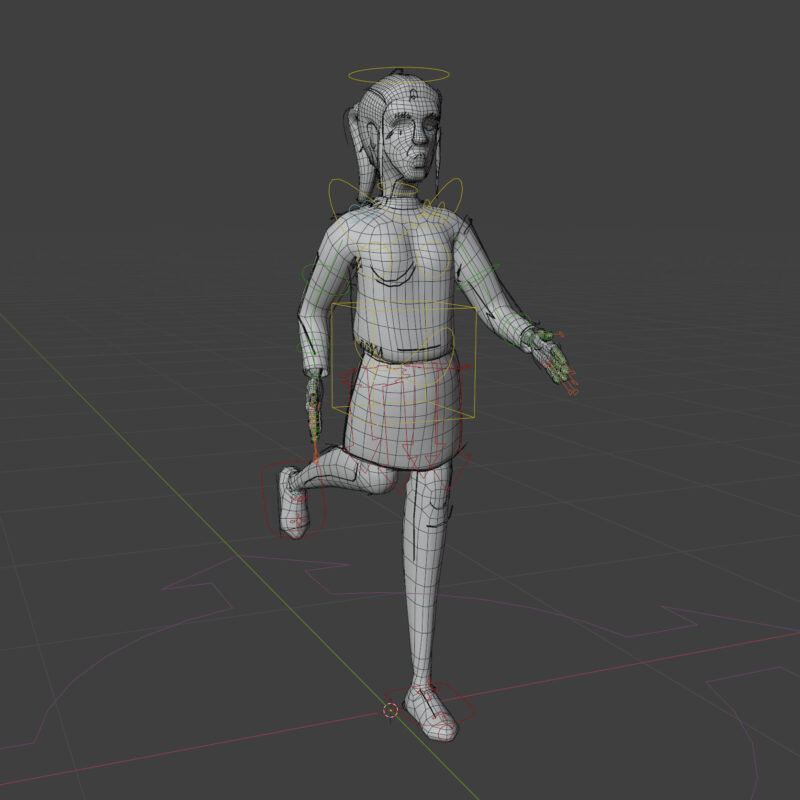
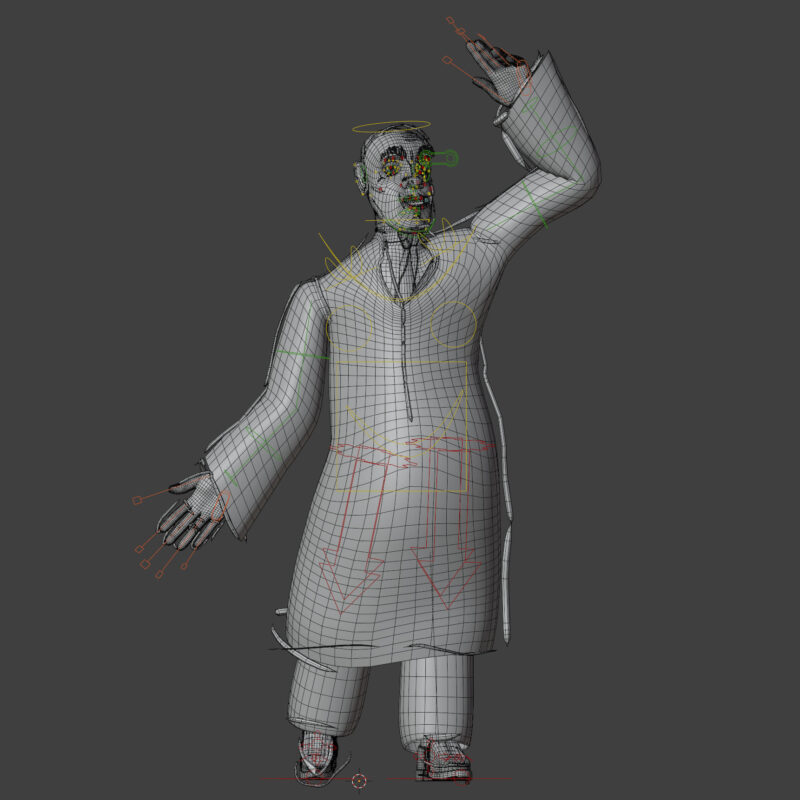
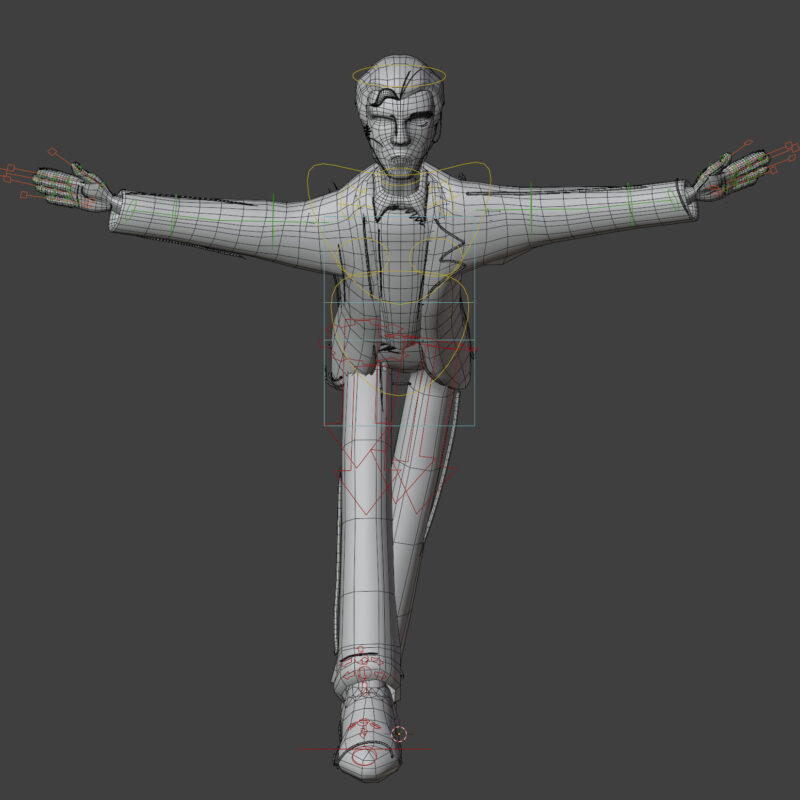
Rigging
As well as creating the environmental assets, I also rigged the judge and the male and female background jury members. I created the rigs by utilising the rigify plugin for Blender, which I could then adjust so that the bones of the rig matched that of the anatomy of the models I had been given. The models were created by other members of the group, giving me the chance to experience work with models other than my own and get an idea of how work is passed on within a 3D studio pipeline.
As the characters were also modelled with a Quill outline, I needed to use weight painting to manually connect individual areas of the outline to each bone created for the 3D mesh. This was a good experience to really consider how each bone in a rig effects how the model moves and bends, highlighting the importance of careful bone placement when constructing the rig.
Animation
I created animations for the main juror and background characters, using the rig I had made for the background characters and a rig made by one of the group members for the main juror.
The animations for the background characters are simple idle animations, with the characters breathing, looking around, fidgeting and contemplating.
An important consideration for these animations was ensuring that the characters returned to their neutral pose, to ensure that there were no jumps between subsequent animations being used on the same character. These short animations are important in making the setting feel engaging and alive.The animations for the main juror have more intent, as the juror acknowledges the bribe against the defendant. I was also able to work with the more defined features of the main juror, and added facial expressions and the character pushing up his glasses.